What is Dhtml?


Overview
Components
Standards
Organisations
Products
DHTML, or Dynamic HyperText Markup Language is a collection of coding languages and tools that allow a web site developer to build dynamic abilities into what would normally be a static web page. What this means is that a web page may be changed after it has been loaded using DHTML. This provides a basis for many useful capabilities, and can make web pages interactive, or feel more alive.
The remainder of this page gives more detail on the definition and development of DHTML.
HyperText Markup Language (HTML) is the language that the web is built on. It uses tags to define formatted text, images, tables and many other components (such as sound, video, animations and Java applets). The main drawback with HTML is that it is for the most part static -- that is, once an HTML page has loaded, they way it looks is the way it will stay looking until the source is changed and you reload it.
Cascading Style Sheets (CSS) allow the formatting of tag on a web page to be applied to all, or a subset of all of occurances of that tag on the page. They also allow the formatting of an entire web page to be applied to many pages. They do this by applying formatting rules or styles to any tag or developer-defined class. The term "cascading" refers to the ability of a CSS class to inherit the styles of all of its ancestors, and the ability to import CSS definitions from many sources (eg. an external file, a <style> header tag, or a "style" property in the opening tag).
The Document Object Model (DOM) is the entity that allows DHTML to be a reality. It is an hierarchical tree of all elements in an HTML page. Under the DOM, every possible tag or element in an HTML page is defined as an object, with properties relating to that element such as width, background color, etc. The good news is that both Microsoft Internet Explorer 4.0 and Netscape Navigator 4.0 implement the DOM. The bad news is that they both implement different DOMs. For instance, a layer may be accessed in IE4 using document.all.layerName, whereas in Netscape 4 the same layer would be referred to as document.layers["layerName"]. This is due to the fact that DHTML is still a new technology (only about one year old) and as yet, no formal standards have been defined for it.
JavaScript is the most popular scripting language used to implement DHTML (there are others, such as Microsoft's VBScript). Functions are written as event handlers, which perform some action when an event (such as the user moving the mouse over an element) is triggered. There are many events that may be handled that are available to each tag or element type. Simply by writing an event handler that changes the colour of a link when the user moves the mouse over it, you will have implemented DHTML in your page.
As mentioned above, due to DHTML's tender young age of approximately one year old, there are no formal standards defining DHTML. This mainly applies to the DOM, and hence IE4 and Netscape 4 browsers have different DOMs. However, there are more defined standards for HTML, JavaScript and soon, CSS.
Version 4 of HTML is currently being recommended to the World Wide Web Consortium.
JavaScript is currently in version 1.4.
A definition of Cascading Style Sheets, level 1, is currently being recommended to the World Wide Web Consortium.
Many organisations are involved with DHTML. There are already many web sites that use and/or relate to DHTML. The major organisation involved in researching and developing the components of DHTML is the World Wide Web Consortium. Also involved are the major browser developers, Microsoft and Netscape. Then there are software companies who have put out web development applications that incorporate DHTML, such as Macromedia.
The major browsers that support DHTML are the fourth and fifth generation versions of Microsoft Internet Explorer and Netscape Navigator.
A recently released web authoring tool that supports DHTML development is Macromedia Dreamweaver.